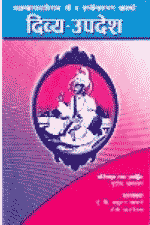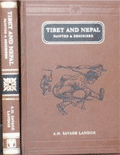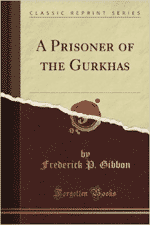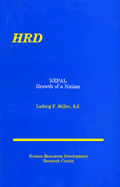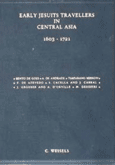Book Review
Ajit Bhattacharjea, Sheikh Mohammad Abdullah: Tragic Hero of Kashmir (New Delhi: Lotus Collection, 2008)
Asoj 30 2066
When the British were leaving South Asia, there were approximately 600 ‘princely states’ in the subcontinent. All of these states were ruled by their respective kings or hereditary rulers. The British gave such kings and rulers the option to accede to India or Pakistan or remain independent.
The majority of these ‘princely states’ acceded to India. A few of them joined Pakistan. It was not all voluntary or a well thought-out process. In each case, the decision was made by the rulers, not by the people, of the respective territories. Problems arose in a few states that claimed a different identity, and therefore, were unwilling to accede to either of the countries or had rulers who were of a different religion than the majority of their subjects. The state of Jammu and Kashmir was one of them.
The state of Jammu and Kashmir prior to 1947 covered an area of 86,024 square miles. The entire state included, beside the Jammu region, Ladakh, Gilgit, Hunza, Nagar, Punial, and Yasin. The tiny state of Chitral, located towards the north-western side of Gilgit, used to pay tribute to Kashmir ruler.
The Hindu king of Kashmir, Maharaja Hari Singh, did not want to accede either to India or to Pakistan. He wanted to continue ruling an independent kingdom. But both India and Pakistan, the two rival states that were fast emerging in the subcontinent, wanted Kashmir to be a part of their territories. In this environment, the king was somehow able to sign a Standstill Agreement with both of these countries and buy some time for a proper environment to make his decision. Until the last moment, he toyed with the idea of remaining independent, but his strength to survive as a nation was too feeble in view of the forces that wanted otherwise.
Ajit Bhattacharjea, a renowned Indian scholar on Kashmir, explains in his new book, Sheikh Mohammad Abdullah: Tragic Hero of Kashmir, the currents of change and the following turn of events that lead Kashmir to where it stands today. The book provides a comprehensive and well-documented account of Abdullah, a prominent figure in India’s struggle for independence from the British rule, and different aspects of his intriguing personality. This account vividly explores how Abdullah, also known as the Lion of Kashmir, contributed crucially to the making of modern India and its founding ideology of secularism. This naturally involves the issue of accession of Kashmir into India on October 26 , 1947 and its right to self-determination.
Written in a biographical style, the book has twenty-four small chapters. The first chapter explains the roots of tolerance of the Kashmiri people. Then there is some background for the Dogra rule (1846-1947) in Kashmir before its accession to India. It is towards the last quarter of this period that Abdullah emerges as a vibrant opposition leader in Kashmir politics. In contrast to the rise of the Muslim League in much of the subcontinent – which was to lead to Partition – Abdullah and his party turned away from communal politics and embraced secularism. On June 11, 1939, he was even successful in changing the name of his party from Kashmir Muslim Conference to National Conference. A great influence of Nehru and his secular principles is of course beyond dispute.
While the theme of secularism has been discussed with much importance in this book, there emerges different aspects of the story of accession of Kashmir in India, the intriguing role of Sheikh Mohammad Abdullah in this regard, the manipulative exercises on the part of the Indian establishment in transition, the unfulfilled promises on the part of Jawaharlal Nehru, the charismatic leader of India, and subsequent political developments. No doubt, this aspect of Kashmir could be illuminating to any reader who has limited knowledge in the upheavals that continue to characterize the politics in this Himalayan state.
In this regard, Bhattacharjea explains in full rigour Abdullah’s Quit Kashmir Movement of 1946, the vicissitudes of the last King, Maharaja Hari Singh, and a period of brief independence that Kashmir enjoyed before it signed the instrument of accession. He then elaborates on the accession drama, something which is very illuminating, the emergence of differences on the perspectives of the parties involved, and the sword of plebiscite that was contemplated to ease the process to honour the Kashmiri people’s right to self determination.
The author is able to explain how key a role Abdullah performed for the accession. Bhattacharjea also leaves no stone unturned to explain the manoeuvres that led to Abdullah’s downfall and arrest on August 8, 1953 and the role of the Home Ministry’s Intelligence Bureau. Obviously, his honeymoon with Nehru was over. After the monarchy was set aside, and the transition was completed somehow smoothly, the author astutely explains how Abdullah’s long, tragic periods of detention was achieved until he was persuaded to return to Jammu and Kashmir as chief minister .
A person who was sworn in as the Prime Minister of Kashmir initially was in due course refashioned into a state chief minister in the Indian union. Indeed, the author explains the tragedy conclusively in one of his concluding paragraphs:
“Abdullah’s national status was recognized by the presence of the president and prime minister at [his] funeral. New Delhi had, however, miscalculated if it believed that the desire for azadi [independence] has died with him. Instead of the continuing democratic campaign for self determination he had waged, it was replaced by encouraging violence and communalism by terror and state counter-terror. Abdullah himself became a victim of militancy with many of his followers distancing themselves from his compromise with Indira Gandhi.” [p. 237]
By the time one completes reading the 257-page book, nothing prevents the reader from suspecting that the power and clout achieved by Sheikh Mohammad Abdullah in the opposition politics of Kashmir was used by Jawaharlal Nehru and the then (transitional) establishment in Delhi to weaken Maharaj Hari Singh, manoeuvre him to sign the instrument of accession, and eliminate monarchy from the state of Jammu and Kashmir forever.
Abdullah was crucial in connecting Kashmir with the larger freedom movement of the Indian National Congress in the plains and align Kashmir with democratic India. But he was perceived to have only a limited role after the Independence of India. Along this line, his demand that the pledge of special status for the Jammu and Kashmir in the accession documents be honoured was also described as anti-national, even pro-Pakistani.
Ajit Bhattachargea concludes his book without any prescriptions for the policymakers of modern India. It is, however, a most recommended reading for all who have interest in the politics of the Himalayan region and nation-building.

